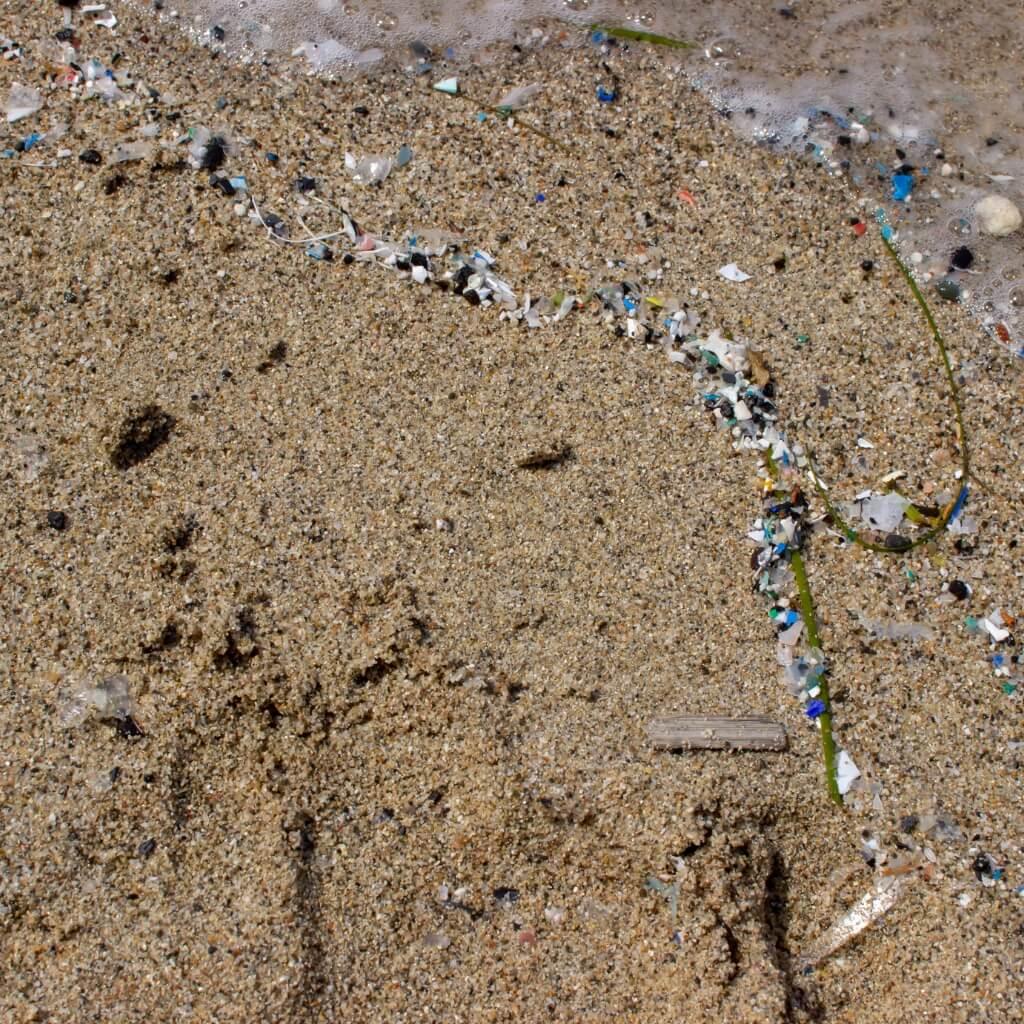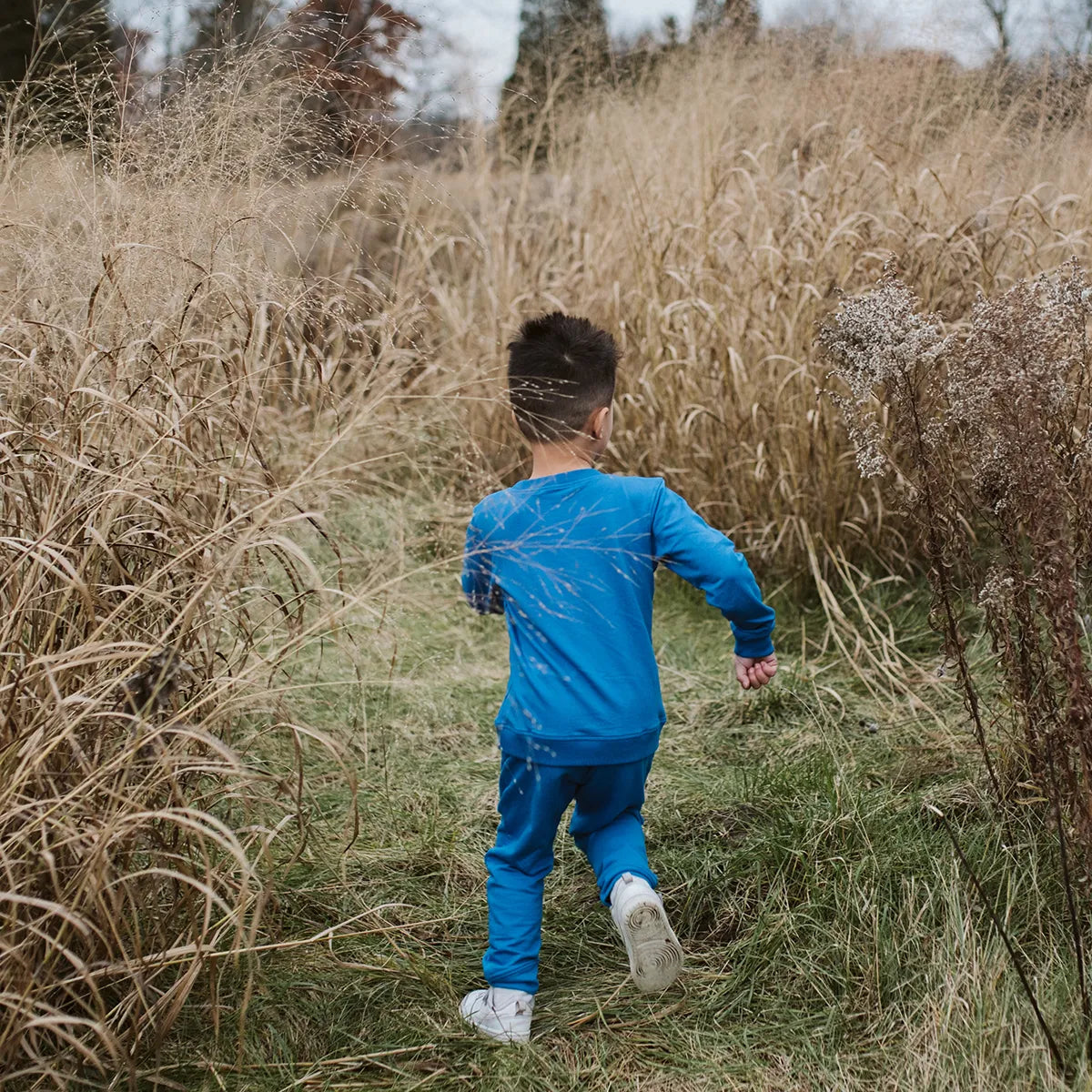Polyester is made of plastic, makes my kid sweat, irritates their skin, and is terrible for the planet. Just how terrible for the planet, you ask? Well, when you put that "super soft" polyester blend t-shirt through the laundry, little fibers (i.e., plastic) get washed away. These tiny pieces of plastic make their way from our washing machines into our ecosystems, and eventually our water and food supply.
What are microplastics?
Microplastics are small (i.e., less than 5mm) pieces of plastic found in our environment. Common sources include microbeads in face washes, industrial manufacturing, and textiles. Textiles are the largest contributor to the problem, accounting for almost 35% of global microplastics. Approximately 50% of our clothing is made of synthetic fibers.

Does polyester release microplastics?
Yes! Read more below about polyester and the other fabrics contributing to microplastic pollution.
-
Polyester
It's everywhere! T-shirts, sweatshirts, joggers, and, sadly, your favorite leggings and workout attire.
-
Acrylic
It looks like wool without the itchy feeling, but some people, including our super-sensitive children, are not fans. These soft, fluffy sweaters contribute to microplastics.
-
Nylon
Most famously used for women's stockings commonly referred to as "nylons". Nylon is also found in underwear and other fabric blends.
-
Spandex
With the popularity of leggings came an increase in demand for spandex. It's stretchy and forgiving but doesn't breathe well because... it's plastic!

Does washing polyester release microplastics?
When you throw a load of clothing containing polyester, acrylic, nylon, spandex, or other synthetic material into the washing machine, between 640,000 and 1.5 million microfibers are released. As your washer drains, the water heads off to your local wastewater treatment facility. The wastewater plant does its best to filter microplastics, but some still make their way through the treatment process and are released into our waterways.
Where are microplastics found?
Microplastics are found in our food, water, and our bodies. When microplastics leave the wastewater treatment plant, they reach our local creeks, streams, rivers, lakes, and ponds. There, they are either suspended in the current, deposited into the sediment, or attached to other material. Their presence in the ecosystem enables them to enter the food chain. The higher we look on the food chain (take predatory fish for example), the greater the concentration of microplastics we'll find. In translation, by the time we as humans get to eat anything that has been exposed to microplastics, we are consuming a lot of them - as much as a credit card's worth per week!

What can we do to reduce microplastics?
While we cannot avoid microplastics, we can take some very simple and practical steps to help reduce their presence in the environment and our exposure to them. Here are a few tips...
-
Buy natural fibers
Organic cotton, hemp, linen, and TENCEL™️ lyocell are all great options, largely due to their natural origins. All contain exactly zero plastic!
-
Buy less
Buy only what you need for your wardrobe. And you need underwear. 😉
-
Only wash clothes when they are dirty
Every time you wash, microfibers are released. So, if your child spends a calm day at school sitting in a chair, wear clothes a second time. But, if your child rolls around in a puddle of mud, please wash. 😀
-
Use a microfiber-catching device
I haven't tried one yet, but I just ordered the Cora Ball and Guppyfriend. I'll update you when I have more feedback on these products.
-
Machine wash cold on a short cycle
Some things like underwear need to be washed more frequently, especially if your child is learning to wipe 🧻. Washing on the cold setting is effective, saves energy since water does not need to be heated, and reduces the number of microfibers released.
Do microplastics matter?
YES!!! We all need to work together to reduce our impact. We are not perfect, but small changes will make a huge difference.




